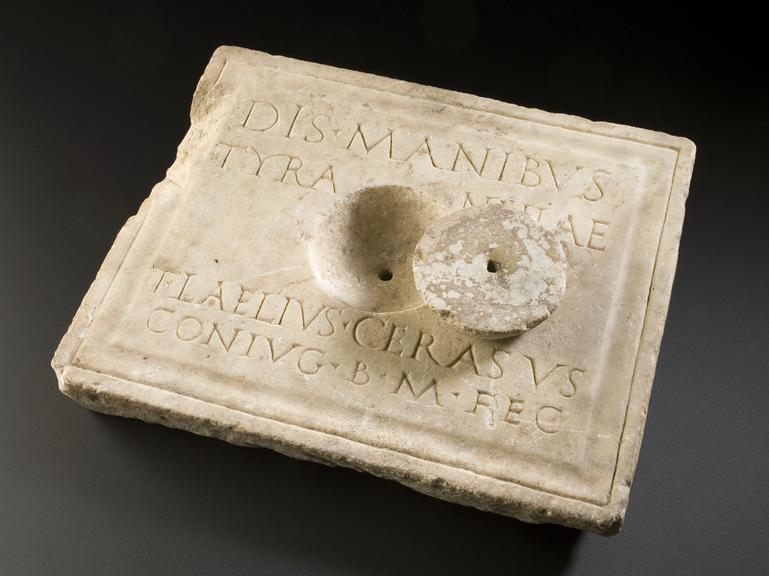

Stone grave marker for pouring libations, Roman, 1-300 CE
- Made:
- 1-300 CE in Roman Empire




Rectangular stone slab, perforated in centre for pouring libations through into a grave, dedicated by a man for his wife Tyrannia, Roman, 1-300
Beginning with the words ‘“To the Spirits of the Dead”, the Latin inscription informs us that this sepulchral slab was dedicated to a woman called Tyrannia by her husband. The slab would have lain on top on a grave and at its centre are holes so that wine, milk, honey, water or oil – known as libations – can be poured into the grave. Libations were offered to the ghosts of the dead to feed them in the afterlife. Another theory is that the offerings were to prevent the dead haunting the living.
The slab was originally part of the Gorga collection owned by Evangelista Gennaro Gorga (1865-1957), a famous Italian opera tenor. The Gorga collection of mostly Roman instruments, votive offerings and pharmacy ware was bought in two parts by Henry Wellcome in 1924 and 1936.
Details
- Category:
- Classical & Medieval Medicine
- Collection:
- Sir Henry Wellcome's Museum Collection
- Object Number:
- A655529
- Materials:
- stone
- Measurements:
-
overall: 46 mm x 320 mm x 260 mm, 8.84 kg
- type:
- sepulchral slab
- credit:
- Gorge




